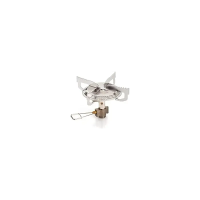17
4.3 Hydraulic Components
4.3.1 Solenoid Valves V-1, V-2, V-3, & V-4
These valves are 4-way, 3-position, double-solenoid operated, spring-centered directional control valves. When both
solenoids of a valve are de-energized, the valve spool is spring-centered and hydraulic fluid is routed directly into the
manifold's return passage.
Each solenoid valve also has a manual operator that can be used to physically shift the valve spool. If a valve does
not operate when the associated control switch is actuated, depressing the manual operator with a ball-point pen or a
screwdriver will cause the valve to shift. If the valve shifts, it can be determined that the problem is in electrical circuit
or solenoid.
The electrical connections to the solenoids are accessible by removing the cover of the terminal box on each valve.
The valves are pre-wired to the electrical junction box inside the hydraulic power unit.
Refer to the certified drawings for additional valve information.
4.3.1.1 Boom UP/DOWN Valve V-1
This solenoid-operated directional control valve alternately pressurizes the piston end and rod end of the double-
acting cylinder to raise and lower the boom. When the valve's "A" solenoid is energized, the valve spool shifts,
pressurizing the piston end of the cylinder, thus raising the boom. When the "B" solenoid is energized, the valve
spool shifts, pressurizing the rod end of the cylinder, thus lowering the boom. Note, when neither "A" nor "B"
solenoid is energized the valve is spring centered so that all ports are blocked and movement is inhibited.
4.3.1.2 Counter Balance Valve V-12
Whenatrest,theprobe’sweightcausesstatichydraulicpressure.ThepurposeoftheCounterBalanceValveisto
preventtheprobefromfree‐fallingslightlywhentheprobeisinitiallypowereddown.Thecounterbalancevalve
alsopreventstheprobefromdriftingdown.Iftheprobedriftsdown,the
counterbalancevalvewillneedtobe
adjustedasfollows:
NOTE: PriortoperformingtheCounterBalanceValveadjustment,firstverifythattheUPport,asshownonthe
powerunitdecal,isactuallytheuphose.Ifnot,theUPandDOWNhosesandthecontrolwiresmustbe
reversed.
4.3.1.2.1 Counter Balance Valve adjustment:
A. TurnONthepumpandraisetheboomhalfwayup(horizontal),extendtheboomallthewayout.TurnOFF
thePump.
B. PushINontheDOWNOVERRIDESPOOL,ontheUP/DOWNDirectionalControlValve.Thisisthevalve’s
bottomoverrideaslookinginsidetheHydraulicPowerUnit.
C. WhilepressinginontheDOWNoverride,turntheCounterbalanceValve’sadjustingscrewClockWise(CW),
tolowerthepressure,untiltheboomjustbeginstodrop.SlowlyturnthescrewCCWuntiltheboomstops
lowering.Turntheadjustmentscrewanadditional¼turnCCW.
D. TheCounterbalance
isadjusted.Ifthereisaproblemprobingdownintothematerial, thesystempressure
mayneedtobeincreasedinsmallincrementsuntiltheprobeoperatesnormally.Aftereachsmallincrease
inpressure,monitorthesystempressurebydeadheadingtheprobeinthedownposition.DONOTEXCEED
THERECCOMENDED
SYSTEMPRESSURE.Ifthepressurewasincreased,theLEFT/RIGHTflowcontrolsmay
needtobereadjusted.

